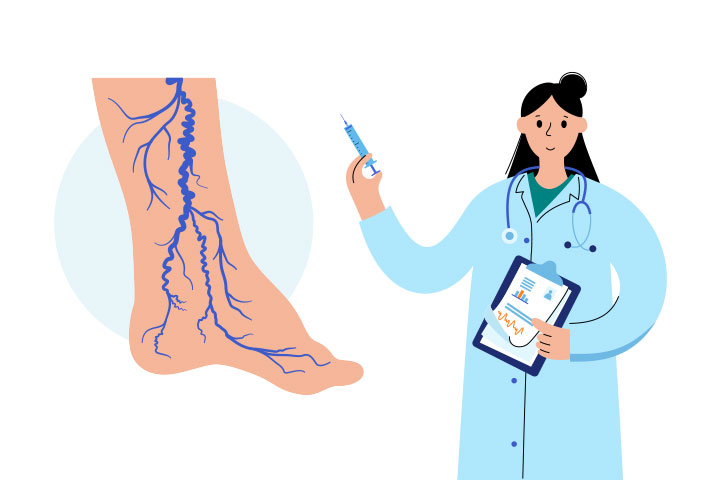Recent Blogs
- What to Expect During Your First Sclerotherapy Session
- What Are The Differences of Superficial and Deep Veins?
- 7 Effective Home Remedies for Managing Varicose Veins
- Top 10 Varicose Vein Myths-Busted!
- Can Dietary Modifications Play a Role in Managing or Preventing Varicose Veins?
- The Link Between Obesity and Varicose Veins Explained
- Choosing the Right Varicose Vein Doctor
- How Safe Is It to Fly After Sclerotherapy?
- Have You Eliminated Dancing Because of Varicose Veins?
- Vein Diseases Linked with Superficial and Deep Veins
Published on: 27-Jun-2024

Varicose and spider veins are common medical conditions affecting millions of people. These two types of veins are different from each other. It is the reason why vascular experts use different treatment options, depending on whether they are spider or varicose veins. Let’s learn about how these veins are treated and which treatment options are there for you:
What are Varicose Veins?
These blue-green veins are twisted and larger than spider veins. Symptoms of varicose veins include leg cramps, pain, swelling, itching, etc. In case of severity, it may result in ulcers and blood clots.
What are Spider Veins?
Spider veins are red, green, or blue in color and are present near the skin’s surface. They are smaller than varicose veins and affect the smaller blood vessels. Commonly, spider veins do not cause any symptoms. They are usually treated to revive the beauty of the legs.
Varicose Veins Treatment
Varicose veins are not just a concern for visual appearance. Even if the veins are not causing trouble, they may create complications like deep vein thrombosis in the future. Thankfully, many modern treatments are available for the successful treatment of varicose veins. These include Sclerotherapy, Radiofrequency Ablation, Varithena, and ClosureFast treatments. In sclerotherapy treatment, a chemical solution is injected into the affected vein. RFA treatment is different as it involves the use of radiofrequency energy for vein closure. Another option is Varithena, which uses microfoam for vein closure. ClosureFast treatment is also done through radiofrequency energy. Most importantly, all these treatments are minimally invasive and performed in an outpatient clinic.
Since varicose veins are larger and deeply rooted, they require a comprehensive evaluation and treatment. These veins often cause deeper venous insufficiency and, therefore, require a more detailed treatment compared to spider veins.
Spider Veins Treatment
Since spider veins are mostly present near the skin’s surface and detailed treatment is not required. Usually, simple laser therapy is enough to target the small veins, which the body can reabsorb. The noninvasive procedures used to treat varicose veins can also be used for spider veins. However, there are differences in approach. Since varicose veins pose a risk of complications and are deep, they require comprehensive treatment. By using the same non-surgical treatments, vascular experts also treat spider veins. The difference lies only in the intensity and detail of the treatment. In case a larger feeder vein is present, it is treated in the same way as varicose veins.
Get Vein Treatment From Comprehensive Vein Care Clinic!
Effective treatment can protect you from long-term implications, whether you have spider or varicose veins. Even if you aren’t experiencing any symptoms, get an analysis done by an expert. Contact Comprehensive Vein Care Clinic in Springfield to book an appointment!